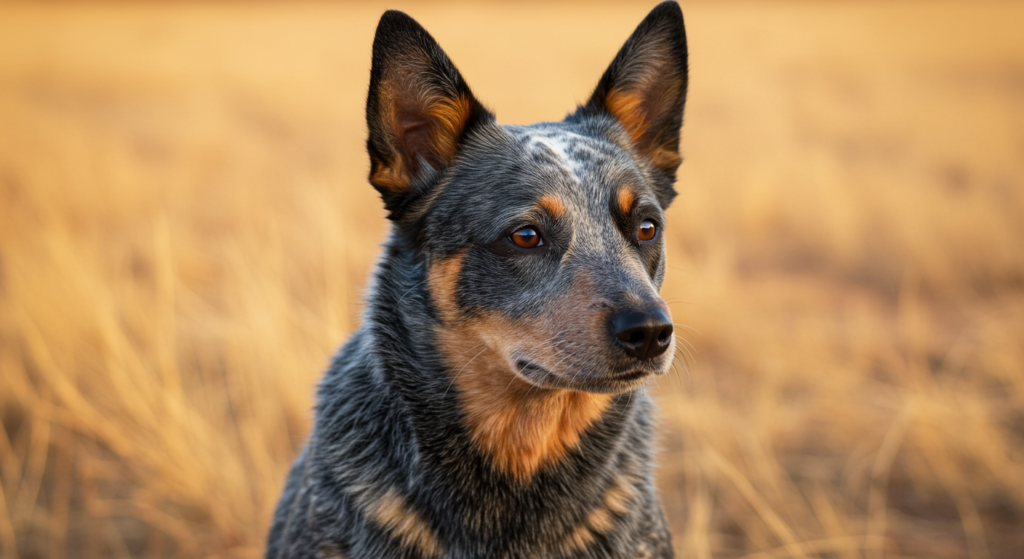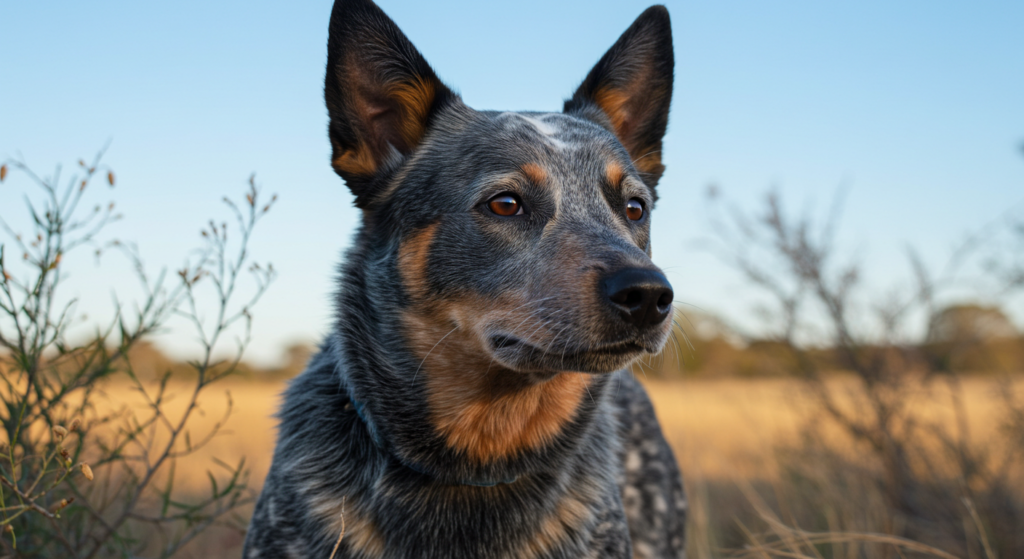Table of Contents
- Introduction
- History of the Australian Cattle Dog
- Physical Characteristics
- Temperament and Personality
- Training and Exercise Needs
- Health and Lifespan
- Grooming and Care
- Conclusion
- FAQs
Introduction
The Australian Cattle Dog, also known as the Blue Heeler or Queensland Heeler, is a highly intelligent and energetic breed renowned for its herding abilities. Originating in Australia, this breed is a favorite among farmers, ranchers, and active families. In this guide, we’ll explore the history, characteristics, and care requirements of the Australian Cattle Dog, providing you with everything you need to know about this remarkable breed.

History of the Australian Cattle Dog
The Australian Cattle Dog was developed in the 19th century by Australian settlers who needed a robust and agile dog to handle cattle in harsh environments. By crossing native Dingoes with Collies and later Dalmatians and Kelpies, breeders created a dog with exceptional stamina, intelligence, and herding instincts. This breed quickly became indispensable to Australian farmers and remains a popular working dog today.
Physical Characteristics
Australian Cattle Dogs are medium-sized, muscular dogs with a sturdy build. They typically weigh between 35-50 pounds and stand 17-20 inches tall. Their coat is short, dense, and weather-resistant, featuring distinctive blue or red speckled patterns. Their alert expression, pricked ears, and strong legs reflect their working heritage.
Temperament and Personality
Known for their intelligence and loyalty, Australian Cattle Dogs are highly devoted to their families. They are energetic, alert, and protective, making them excellent watchdogs. However, their strong herding instincts can sometimes lead to nipping or chasing behaviors, especially around children or other pets. Early socialization and training are essential to manage these tendencies.
Training and Exercise Needs
Australian Cattle Dogs thrive on mental and physical stimulation. They require regular exercise, including long walks, runs, or agility training, to prevent boredom and destructive behaviors. Their intelligence makes them quick learners, but they can also be independent and stubborn. Positive reinforcement techniques work best for training this breed.
Health and Lifespan
Australian Cattle Dogs are generally healthy, with a lifespan of 12-15 years. However, they are prone to certain genetic conditions, such as hip dysplasia, progressive retinal atrophy, and deafness. Regular veterinary check-ups, a balanced diet, and proper exercise can help maintain their overall health.
Grooming and Care
The Australian Cattle Dog’s short coat is low-maintenance, requiring only weekly brushing to remove loose hair and dirt. Bathing should be done as needed, and regular nail trimming, ear cleaning, and dental care are essential to keep them in top condition.
Conclusion
The Australian Cattle Dog is a versatile and hardworking breed that excels in both herding and companionship roles. With proper training, exercise, and care, they make loyal and devoted pets for active individuals or families. If you’re looking for a dog that’s intelligent, energetic, and full of character, the Australian Cattle Dog might be the perfect choice.

FAQs
1. Are Australian Cattle Dogs good with children?
Yes, but they require early socialization and supervision due to their herding instincts, which may lead to nipping.
2. How much exercise does an Australian Cattle Dog need?
They need at least 1-2 hours of vigorous exercise daily to stay happy and healthy.
3. Do Australian Cattle Dogs shed a lot?
They have a moderate shedding level, with seasonal increases during spring and fall.
4. Can Australian Cattle Dogs live in apartments?
They can adapt to apartment living if provided with sufficient exercise and mental stimulation.
5. Are Australian Cattle Dogs easy to train?
Yes, they are highly intelligent and respond well to consistent, positive reinforcement training.
